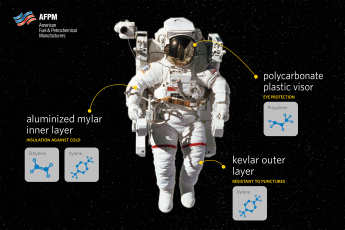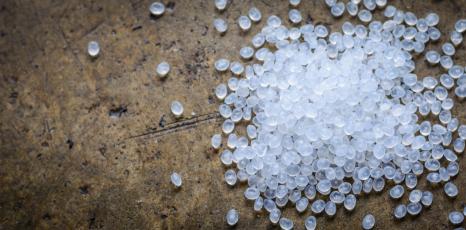This week my beloved University of Virginia Cavaliers kick off their 2016-2017 men’s basketball season with the first game of the season. I’m ready to go to the stadium and cheer the team on to victory. When you watch basketball, have you ever realized how many petrochemical-based products make basketball the game it is today?
Originally made from wool, the players’ uniforms have evolved to progressive knit jerseys and shorts featuring cutting-edge design technology to maximize performance. Whether it’s moisture wicking, thermal tech or compression fabrics, the root of these apparel advancements lies in synthetic fabrics. Polyester (made from petrochemicals like ethylene and benzene) is the most common synthetic material used in performance apparel. One of its best functions is its ability to pull sweat away from the skin to the exterior of the clothing. In fact, some uniforms are made from over 95% recycled petrochemical-based material.
On the court, a typical basketball is made from leather or rubber on the exterior, but the bladder is made of butyl rubber (derived from butylene) to provide a tough, airtight inner compartment. The basketball treads can be made from nylon (derived from ethylene and benzene) or polyester. As the ball swooshes through the basket, it passes through a nylon-based net. Some multi-purpose courts even include advanced features to aid responsiveness and playability. For instance, some flooring includes a polypropylene plastic surface (made from the petrochemical propylene) for greater shock absorption and sound dampening. And some surfaces also feature a polyurethane finish (derived from propylene) atop the plastic flooring to further enhance durability and moisture resistance.
As I cheer UVA on from my high-density polyethylene seat (made from ethylene), I also cheer on “team petrochemicals” for helping make basketball even better.


